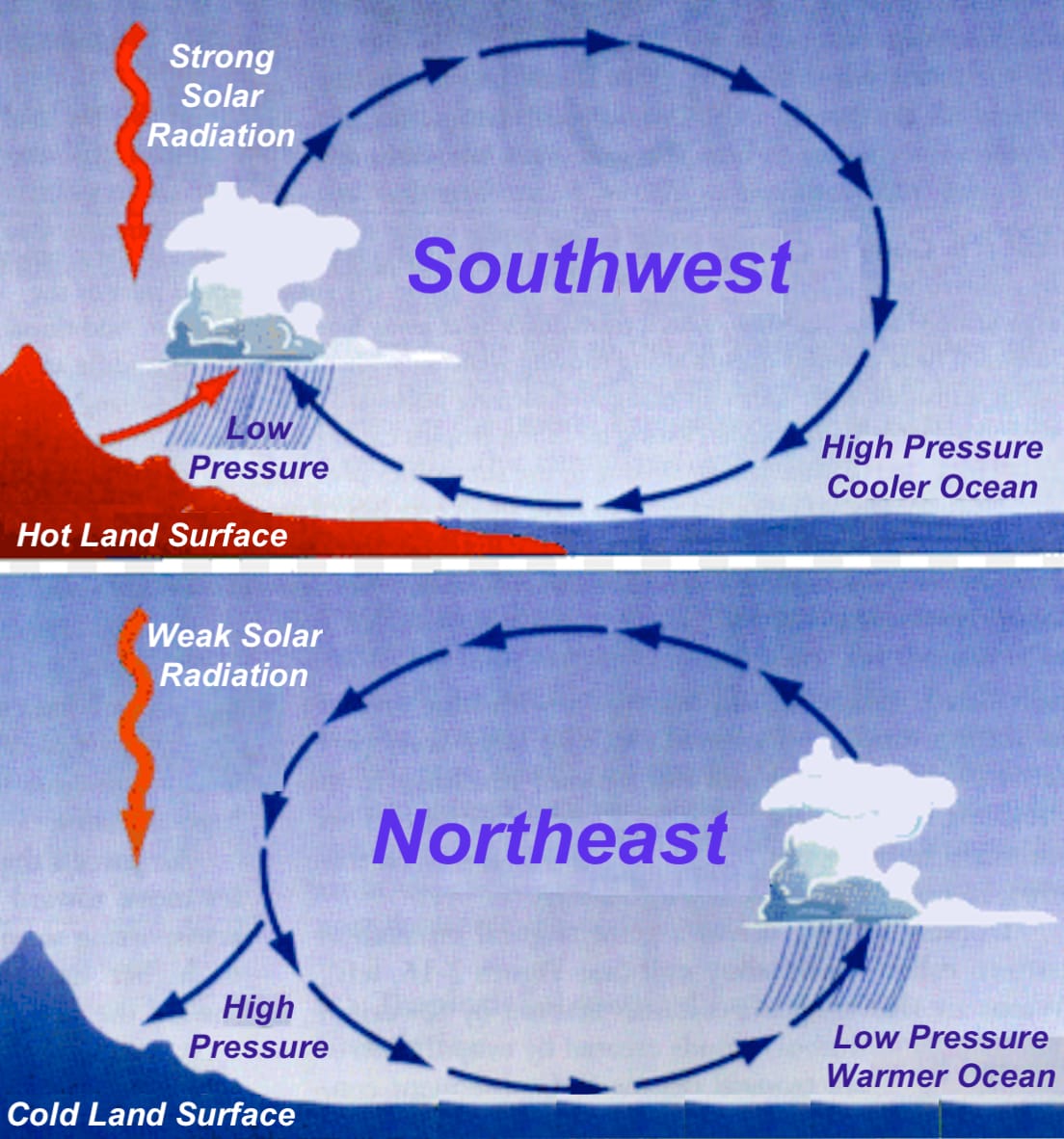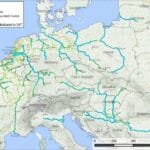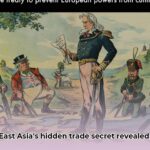From time immemorial, the seasonal dance of the monsoon winds has been shaping the rhythm of the global marketplace. Like skilled navigators guiding ships across the vast seas, these predictable yet formidable forces have orchestrated a grand ballet of cultural exchange, economic prosperity, and the rise of civilizations. Let’s embark on a journey to explore how our knowledge of the monsoons shaped the trade routes that connect us and the world we live in.
How Did Monsoons Influence Ancient Trade?
Imagine a time long before engines and GPS, when the open ocean was a daunting and mysterious expanse. For ancient seafarers, the wind wasn’t just a force of nature; it was a vital tool, especially the powerful and predictable monsoon winds that swept across the Indian Ocean. These winds became the lifeblood of trade, dictating the rhythm of journeys and shaping the destinies of empires.
During the summer months, the monsoon winds blew steadily from the southwest, carrying ships from Southeast Asia towards the west. This reliable wind power allowed traders to sail to distant lands like India and even the east coast of Africa. Their ships, laden with exotic spices, luxurious silks, gleaming jewels, and other treasures, followed the winds’ call.
Then, as the seasons turned, the winds reversed. The winter monsoon, originating from the northeast, provided the perfect push for the return journey. Ships sailed back east, filled with goods from across the Indian Ocean, completing a cycle of trade that connected civilizations across vast distances.
This intricate dance with the monsoon winds wasn’t just about brute force; it demanded deep knowledge and skill. Shipbuilders crafted vessels with large, triangular sails called lateen sails, specifically designed to catch the monsoon winds effectively, regardless of their direction. Navigators, meanwhile, became masters of the sea, using the stars, the sun, and even subtle changes in the water to guide their way.
The Enduring Legacy of Monsoon Winds on Trade
This mastery of the monsoon winds had a profound effect on the world. The knowledge of when and where these winds blew allowed empires to rise and prosper. The mighty Roman Empire, for example, probably built a lucrative trade relationship with India by tapping into the power of the monsoons. Centuries later, during the golden age of Islam, Arab traders, guided by the same winds, dominated the Indian Ocean, controlling a flow of goods that stretched from the East Indies to the bustling ports of East Africa.
But the impact of the monsoon winds extended far beyond the realm of economics. As ships laden with goods journeyed across the ocean, they carried something equally valuable: culture. Traders shared stories, religious beliefs, and even new technologies, leaving a lasting impact on the societies they encountered. It’s no exaggeration to say that the monsoon winds helped to spread ideas and innovations, connecting different cultures and contributing to a richer, more interconnected world.
Though modern technology has diminished our reliance on wind power, the legacy of the monsoon winds continues to ripple through time. The seafaring traditions, the cultural exchanges, and even the trade routes established centuries ago still bear witness to the power of these winds. They stand as a powerful reminder of how humans, by understanding and harnessing the forces of nature, were able to connect the world and shape the course of history.
Understanding the Impact of Monsoon Winds on Trade: A Deep Dive
Here’s a comprehensive look at how monsoon winds affected trade:
Key Points:
- Monsoon winds were a crucial factor in ancient sea trade, providing predictable wind power for journeys across the Indian Ocean.
- Summer monsoons carried ships westward from Southeast Asia towards India and Africa.
- Winter monsoons provided the return push eastward, completing the trade cycle.
- Shipbuilders designed vessels with lateen sails to maximize the use of monsoon winds.
- Navigators relied on celestial bodies and natural features to guide their journeys.
- Empires like the Roman Empire and Islamic traders prospered due to their mastery of monsoon winds and their economic importance.
- In addition to trade, monsoon winds facilitated cultural exchanges, sharing stories, beliefs, and technologies.
- The impact of monsoon winds extended far beyond the realm of economics, connecting cultures and fostering a more interconnected world.
- Modern technology has reduced reliance on wind power, but the legacy of monsoon winds remains in seafaring traditions, cultural exchanges, and trade routes established centuries ago.
How the Monsoon Winds Shaped Trade:
- Reliable Trade Routes: Just like modern-day shipping lanes, the monsoon winds enabled the creation of established trade routes. Merchants knew when the winds would be favorable for travel in a specific direction, making trade more predictable and efficient.
- Two-Way Trade: The monsoon winds were like a natural shuttle service, facilitating a continuous back-and-forth flow of goods and ideas. When the winds reversed direction, merchants could return home, completing a cycle that fostered economic and cultural exchange.
- Regional Specialties: This dependable trade led to some regions becoming famous for producing particular goods. This specialization meant increased production and higher quality goods, as regions could focus on what they did best.
- Rise and Fall of Empires: Control over major ports and key trade routes was like holding the winning hand in a game of strategy. It brought power and wealth, influencing the rise and fall of powerful empires like the Cholas and the Srivijaya.
The Takeaway:
The monsoon winds were far more than just weather phenomena; they were the driving force behind a complex and interconnected world of trade. Their predictability allowed for the establishment of trade routes and schedules, fostering economic growth and cultural exchange. While they could be unpredictable at times, the potential rewards far outweighed the risks for many adventurous traders. The monsoon winds, in their own way, helped shape the destinies of nations and left an indelible mark on history.
How Did Knowledge of the Monsoons Facilitate Trade?
We’ve talked about how early sailors braved the open ocean, relying on their wits and a deep connection with nature to navigate. Now, let’s dive into one of their most valuable tools: the monsoon winds. These winds weren’t just random gusts; they were like clockwork, changing direction with the seasons. This predictable pattern turned out to be a game-changer for trade in the Indian Ocean. Imagine a natural highway across the sea, and that’s what the monsoons provided!
So, how did this knowledge actually help traders?
Planning Makes Perfect: Imagine setting sail without knowing which way the wind would blow! Terrifying, right? Knowing when the monsoons would shift allowed sailors to plan their trips carefully. They knew exactly when to set off to ride favorable winds and when to expect their return journey, making sea travel much more reliable and a whole lot less scary.
Full Speed Ahead: The monsoon winds were powerful allies, propelling ships across the water at a much faster clip than rowing could ever achieve. This meant traders could cover greater distances in less time, making journeys to far-off lands more achievable. Think of it like catching a high-speed train instead of a horse-drawn cart! This speed boost opened up opportunities for exchanging goods with distant civilizations, leading to booming trade and cultural exchange.
Navigating Safely: The open ocean can be a fickle beast, throwing storms and volatile weather at unsuspecting sailors. But knowing the rhythm of the monsoons gave sailors a secret weapon. They could use this knowledge to sidestep dangerous storms and navigate more safely. This predictability reduced the risks of sea travel, encouraging more merchants to embark on long voyages, knowing they had a better chance of returning home safely.
Think of it this way: the knowledge of monsoons was like having a weather forecast centuries before modern technology. It gave sailors a huge advantage, allowing them to use the power of nature to their advantage and turning the Indian Ocean into a bustling hub of trade and cultural exchange.
What is the Relationship Between Trade Winds and Monsoons?
We’ve already established a bit about trade winds and monsoons, but let’s dive deeper into their fascinating relationship, especially in the Indian Ocean. Think of this relationship as a kind of push and pull that has shaped the way people sailed and traded for centuries.
You see, trade winds are like the planet’s breath, constantly flowing towards the equator. It’s this consistent movement that originally allowed sailors to venture across the seas. Monsoons, however, are like the seasons of the sea, changing direction with the time of year. They are the heartbeat of the Indian Ocean, dictating the rhythm of life for those who depend on the sea.
Let’s take the Indian Ocean as an example. During the winter months, the northeast monsoon blows steadily from the landmass of Asia towards the Indian Ocean. Imagine this wind as a giant hand gently pushing ancient ships westward, carrying traders from India and Southeast Asia towards the Arabian Peninsula and the eastern shores of Africa. These skilled navigators relied on the northeast monsoon to carry them and their goods across vast distances.
Then, as the seasons shift, a fascinating thing happens – the wind changes direction! When summer arrives, the southwest monsoon takes over, blowing from the Indian Ocean towards the Asian mainland. Now, imagine this wind as a hand gently pulling those same ships back eastward, laden with treasures from Africa and Arabia, towards India and beyond. This natural cycle of wind reversal allowed a continuous exchange of goods and culture, connecting civilizations across the Indian Ocean.
It’s important to remember that this predictable pattern of wind wasn’t just a stroke of luck for ancient sailors. They observed and learned the rhythms of the monsoons, using this knowledge to plan their voyages. This deep understanding of the wind and the sea allowed them to build powerful trade networks that spanned across the Indian Ocean, making it a bustling hub of cultural exchange and commerce for centuries. The relationship between trade winds and monsoons is a testament to how humans have always adapted to and utilized the natural world for exploration and connection.
Learn more about what is placemaking in AP human geography in simple terms and get an in-depth understanding of this popular topic.
- Revolution Space: Disruptive Ion Propulsion Transforming Satellites - April 24, 2025
- Race Through Space: Fun Family Game for Kids - April 24, 2025
- Unlocking the Universe: reading about stars 6th grade Guide - April 24, 2025

















1 thought on “Harnessing the Winds of Fortune: How Knowledge of Monsoons Shaped Global Trade Routes”
Comments are closed.